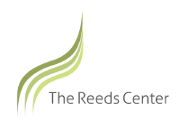Body-Focused Repetitive Behaviors (BFRBs)
Our expert clinicians provide the latest evidence-based treatments for those struggling with BFRBs.

What are BFRBs?
Body-Focused Repetitive Behaviors (BFRBs) include a group of related disorders that are characterized by repetitive self-grooming habits (such as skin picking, hair pulling, nail biting, cheek biting, and other similar behaviors) that have become a problem for the person because of physical damage to their body and/or interference in their social, work, or family lives. Unlike self-harming behaviors, many people with BFRBs report that the habit is pleasurable or self-regulating, and that damage to the person’s body is an unintended consequence of the behavior. Often people with these habits have tried multiple times to stop or decrease the behaviors, but have found it very difficult to achieve enduring change.
Hair Pulling
Hair Pulling Disorder (also referred to as Trichotillomania) is a BFRB characterized by urges to pull out hair from the scalp, eyelashes, eyebrows, pubic area, underarm area, or other parts of the body. Hair Pulling Disorder can result in noticeable bald patches and damage to the skin.
Skin Picking
Skin Picking Disorder (also referred to as Excoriation Disorder) is another type of BFRB. It is characterized by repetitive touching, rubbing, scratching, picking, or digging into skin. These behaviors can result in skin discoloration, scarring, and tissue damage.
Nail Biting
Nail Biting Disorder (also referred to as Onychophagia), another type of BFRB, is characterized by biting nails past the nail bed and/or biting cuticles. This can result in bleeding, soreness, and infection.
We Offer In-Person, Online, and In-Home Sessions to Treat BFRBs
Our clinicians can deliver therapy through multiple contexts, helping people apply the therapy where they live and work
Evidence-Based Treatment of BFRBs
Cognitive Behavioral therapy (CBT) is considered to be the most effective, evidence-based treatment for BFRBs. CBT skills and techniques have been shown to help many who suffer from BFRBs reduce and eliminate the problem habits. Under the umbrella of CBT treatment approaches for BFRBs are habit reversal training (HRT) and comprehensive behavioral treatment (ComB).
At The Reeds Center, we use the latest ComB and HRT techniques to support people with BRFBs in treating their habit. We often bolster treatment with acceptance-based interventions from Acceptance and Commitment Therapy (ACT) as well as emotion and distress regulation techniques from Dialectical Behavior Therapy (DBT). Our approach uses these evidence-based interventions to help people grow their awareness of their habit and triggers, implement alternative behavioral responses, and stop or decrease their problem behaviors.

FAQs
Medications are generally considered less effective than CBT treatment in treating BFRBs. Sometimes, certain drugs (such as SSRIs) can be helpful as a supplement to CBT treatment when anxiety, mood, or emotion dysregulation is part of the symptom presentation.
Medications are generally considered less effective than CBT treatment in treating BFRBs. Sometimes, certain drugs (such as SSRIs) can be helpful as a supplement to CBT treatment when anxiety, mood, or emotion dysregulation is part of the symptom presentation.
Yes– research shows that CBT treatment for BFRBs is effective for both children and adults. Treatment for children experiencing a BFRB includes caregivers to assist with treatment implementation.
Yes– research shows that CBT treatment for BFRBs is effective for both children and adults. Treatment for children experiencing a BFRB includes caregivers to assist with treatment implementation.
What Our Clients Say

